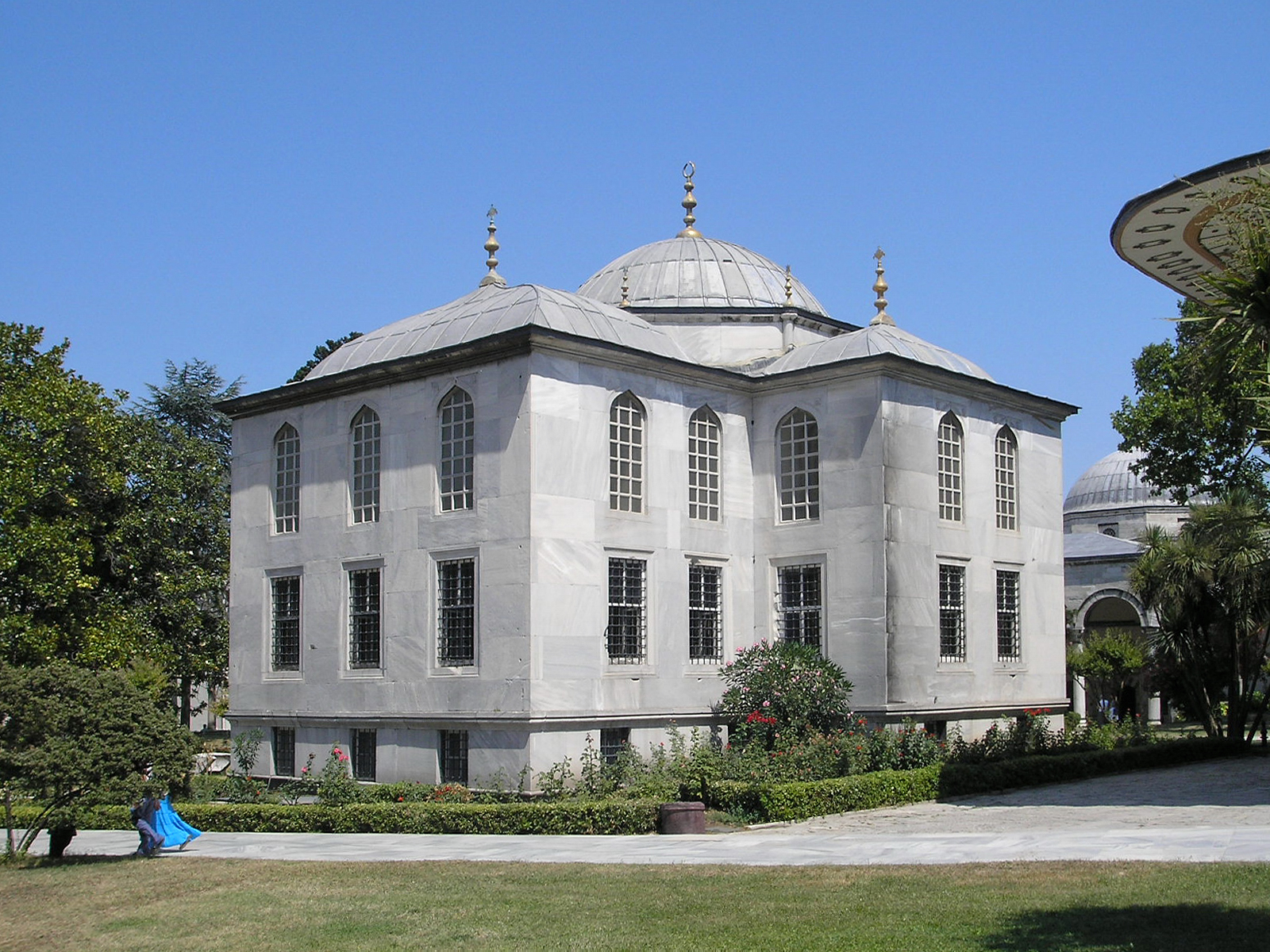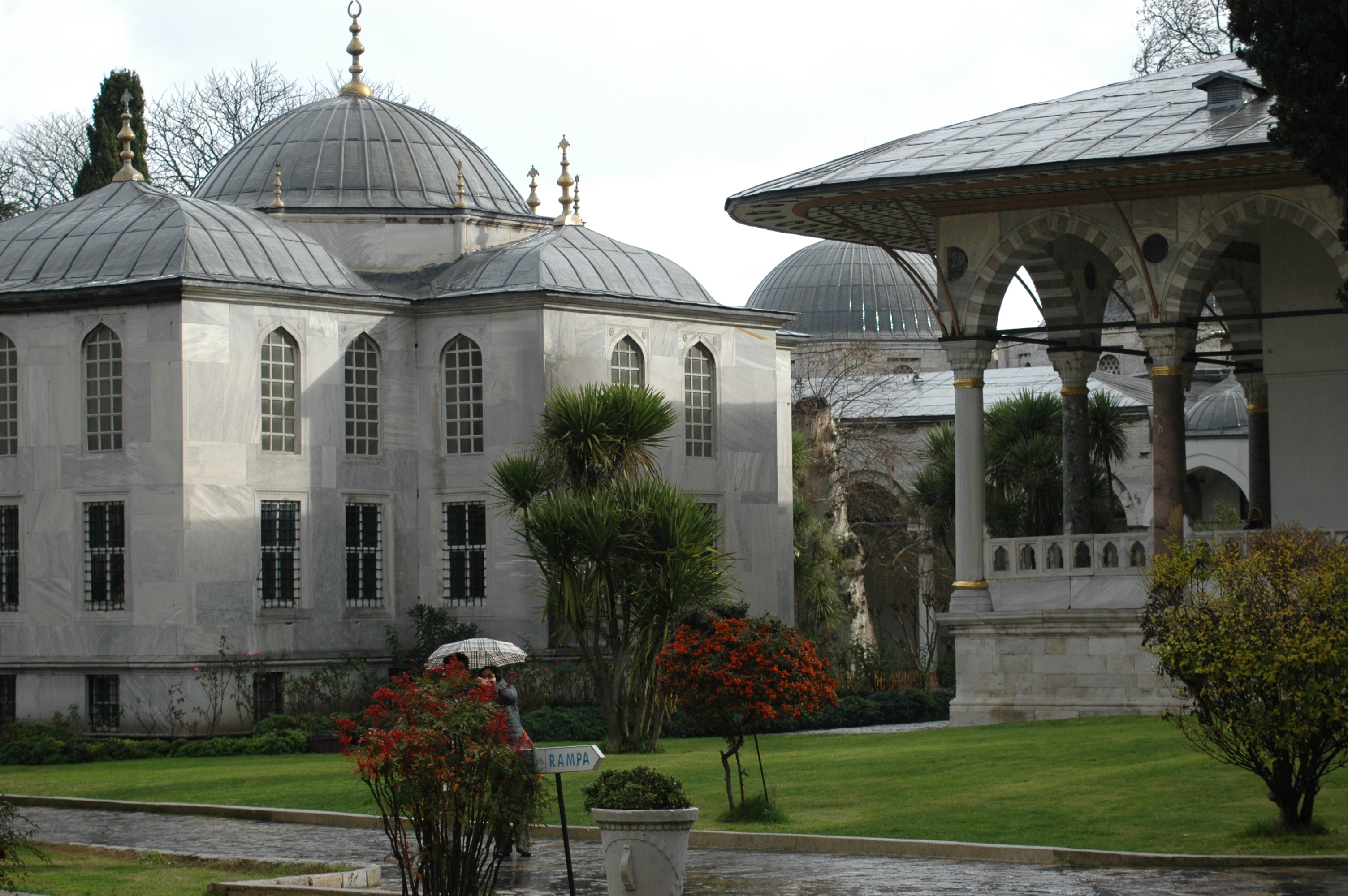Enderun School on:
[Wikipedia]
[Google]
[Amazon]
 The Enderun School ( ota, اندرون مکتب, Enderûn Mektebi) was a palace school and boarding school within Topkapi Palace. It was mostly for Princes of the court and the Janissaries of the
The Enderun School ( ota, اندرون مکتب, Enderûn Mektebi) was a palace school and boarding school within Topkapi Palace. It was mostly for Princes of the court and the Janissaries of the
 The third courtyard of the Topkapi Palace was surrounded by the Imperial Treasury, the Pavilion of the Holy Mantle, and the buildings of the Palace School, which educated the top tier of students from Enderun as well as princes of the House of Osman. There were seven halls or grades within the Palace School, and within each hall there were 12 teachers responsible for the students' mental and academic development. Students wore special uniforms designated by their achievement level. Additional buildings included the library, mosque, music conservatories, dormitories, and baths.Miller, B. (1973). The palace school of Muhammad the Conqueror (Reprint ed.). NY: Arno Press.
The third courtyard of the Topkapi Palace was surrounded by the Imperial Treasury, the Pavilion of the Holy Mantle, and the buildings of the Palace School, which educated the top tier of students from Enderun as well as princes of the House of Osman. There were seven halls or grades within the Palace School, and within each hall there were 12 teachers responsible for the students' mental and academic development. Students wore special uniforms designated by their achievement level. Additional buildings included the library, mosque, music conservatories, dormitories, and baths.Miller, B. (1973). The palace school of Muhammad the Conqueror (Reprint ed.). NY: Arno Press.
 The Enderun system consisted of three preparatory schools located outside of the palace in addition to the one within the palace walls itself. According to Miller, there were 1,000–2,000 students in three Enderun Colleges, and about 300 students in the top school in the Palace. The curriculum was divided into five main divisions:Akkutay, U. (1984). Enderun mektebi. Ankara, Turkey: Gazi Üniversitesi Eğitim Fak. Yay.
* Islamic sciences; including Arabic, Turkish and Persian language education
* Positive sciences; mathematics, geography
* History, law, and administration: the customs of the Palace and government issues
* Vocational studies, including art and music education
* Physical training, including weaponry
At the end of the Enderun school system, the graduates would be able to speak, read, and write at least three languages, able to understand the latest developments in science, have at least a craft or art, and excel in army command as well as in close combat skills.
The Enderun system consisted of three preparatory schools located outside of the palace in addition to the one within the palace walls itself. According to Miller, there were 1,000–2,000 students in three Enderun Colleges, and about 300 students in the top school in the Palace. The curriculum was divided into five main divisions:Akkutay, U. (1984). Enderun mektebi. Ankara, Turkey: Gazi Üniversitesi Eğitim Fak. Yay.
* Islamic sciences; including Arabic, Turkish and Persian language education
* Positive sciences; mathematics, geography
* History, law, and administration: the customs of the Palace and government issues
* Vocational studies, including art and music education
* Physical training, including weaponry
At the end of the Enderun school system, the graduates would be able to speak, read, and write at least three languages, able to understand the latest developments in science, have at least a craft or art, and excel in army command as well as in close combat skills.
Enderun Website
* {{in lang, tr}
Enderun Mektebi
Topkapı Palace Turkish words and phrases Education in the Ottoman Empire
Ottoman Empire
The Ottoman Empire, * ; is an archaic version. The definite article forms and were synonymous * and el, Оθωμανική Αυτοκρατορία, Othōmanikē Avtokratoria, label=none * info page on book at Martin Luther University) ...
. Students here were primarily recruited via ''devşirme
Devshirme ( ota, دوشیرمه, devşirme, collecting, usually translated as "child levy"; hy, Մանկահավաք, Mankahavak′. or "blood tax"; hbs-Latn-Cyrl, Danak u krvi, Данак у крви, mk, Данок во крв, Danok vo krv ...
'', a system of the Islamization of Christian slave children for serving the Ottoman government in bureaucratic, managerial, and Janissary
A Janissary ( ota, یڭیچری, yeŋiçeri, , ) was a member of the elite infantry units that formed the Ottoman Sultan's household troops and the first modern standing army in Europe. The corps was most likely established under sultan Orhan ...
military positions.Kemal H Karpat "Social Change and Politics in Turkey: A Structural-Historical Analysis" page 204 Over the centuries, the Enderun School was fairly successful in generating Ottoman statesmen by drawing among the empire's various ethnic groups and giving them a common Muslim education. The school was run by the "Inner Service" (''Enderûn
''Enderûn'' ( ota, اندرون, from Persian ''andarûn'', "inside") was the term used in the Ottoman Empire to designate the "Interior Service" of the Imperial Court, concerned with the private service of the Ottoman Sultans, as opposed to th ...
'') of the Ottoman palace and had both academic and military purposes. The graduates were expected to devote themselves to government service and be free of links to lower social groups.
The Enderun School's gifted education program has been called the world's first institutionalized education for the gifted.
History
The growth of Ottoman Empire is attributed and was dependent on the selection and education of statesmen. A vital component ofMehmet II
Mehmed II ( ota, محمد ثانى, translit=Meḥmed-i s̱ānī; tr, II. Mehmed, ; 30 March 14323 May 1481), commonly known as Mehmed the Conqueror ( ota, ابو الفتح, Ebū'l-fetḥ, lit=the Father of Conquest, links=no; tr, Fâtih Su ...
's goal to revive the otoman Empire was to establish a special school to select the best youngsters within the empire and to mold them for government. Mehmet II improved the existing palace school founded by his father, Murat II
Murad II ( ota, مراد ثانى, Murād-ı sānī, tr, II. Murad, 16 June 1404 – 3 February 1451) was the sultan of the Ottoman Empire from 1421 to 1444 and again from 1446 to 1451.
Murad II's reign was a period of important economic deve ...
and established the Enderun Academy (Enderun) in Istanbul.
Buildings
Curriculum
 The Enderun system consisted of three preparatory schools located outside of the palace in addition to the one within the palace walls itself. According to Miller, there were 1,000–2,000 students in three Enderun Colleges, and about 300 students in the top school in the Palace. The curriculum was divided into five main divisions:Akkutay, U. (1984). Enderun mektebi. Ankara, Turkey: Gazi Üniversitesi Eğitim Fak. Yay.
* Islamic sciences; including Arabic, Turkish and Persian language education
* Positive sciences; mathematics, geography
* History, law, and administration: the customs of the Palace and government issues
* Vocational studies, including art and music education
* Physical training, including weaponry
At the end of the Enderun school system, the graduates would be able to speak, read, and write at least three languages, able to understand the latest developments in science, have at least a craft or art, and excel in army command as well as in close combat skills.
The Enderun system consisted of three preparatory schools located outside of the palace in addition to the one within the palace walls itself. According to Miller, there were 1,000–2,000 students in three Enderun Colleges, and about 300 students in the top school in the Palace. The curriculum was divided into five main divisions:Akkutay, U. (1984). Enderun mektebi. Ankara, Turkey: Gazi Üniversitesi Eğitim Fak. Yay.
* Islamic sciences; including Arabic, Turkish and Persian language education
* Positive sciences; mathematics, geography
* History, law, and administration: the customs of the Palace and government issues
* Vocational studies, including art and music education
* Physical training, including weaponry
At the end of the Enderun school system, the graduates would be able to speak, read, and write at least three languages, able to understand the latest developments in science, have at least a craft or art, and excel in army command as well as in close combat skills.
Graduation
The graduation ceremony for students leaving the Enderun School was known as . The graduates themselves were referred as çıkma. The word literary means "who has exited". Thepage
Page most commonly refers to:
* Page (paper), one side of a leaf of paper, as in a book
Page, PAGE, pages, or paging may also refer to:
Roles
* Page (assistance occupation), a professional occupation
* Page (servant), traditionally a young m ...
s were leaving Palace School and palace service to continue their training in the functional service. This "transferral" occurred every two to seven years, or after the accession of new sultan to the throne.
The successful graduates were assigned according to their abilities into two mainstream positions: governmental or science,Armagan, A. (2006). Osmanlı’da ustün yetenekliler fabrikası: Enderun Mektebi. Yeni Dünya Dergisi 10, 32. and those who failed to advance were assigned to military. One of the most distinctive properties of the school was its merit system consisting of carefully graded rewards and corresponding punishments.
Notes and references
External links
Enderun Website
* {{in lang, tr}
Enderun Mektebi
Topkapı Palace Turkish words and phrases Education in the Ottoman Empire